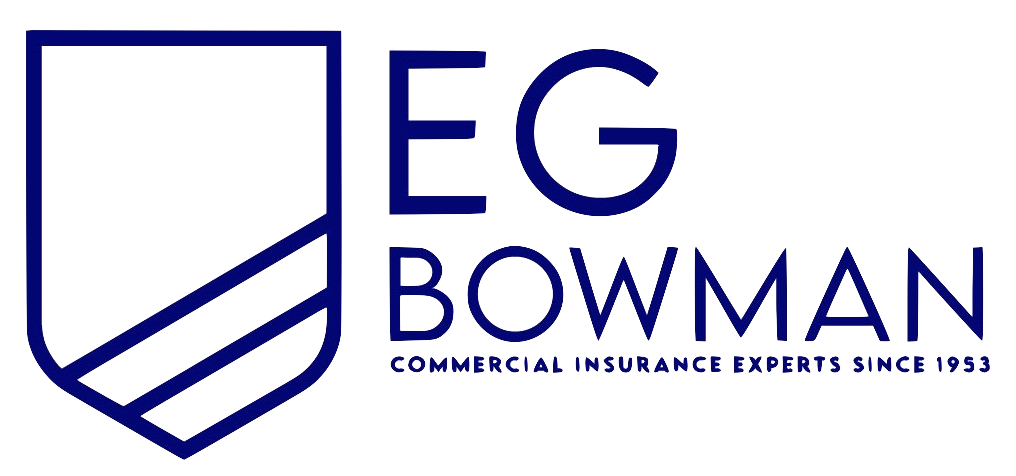New York Fraternal Organization Insurance
See How We're Different:
or Call Us: 212-425-8150

Most Common Business Policies
Index
Understanding Fraternal Organization Insurance
New York State Regulations for Fraternal Organization Insurance
Types of Coverage for Fraternal Organizations in New York
Factors to Consider When Choosing a Fraternal Organization Insurance
The Process of Claiming Fraternal Organization Insurance in New York
Frequently Asked Questions about Fraternal Organization Insurance in New York
Contact Us
In the vibrant state of New York, fraternal organizations play a pivotal role in fostering community spirit and providing support. However, just like any other institution, they face unique risks that can jeopardize their operations. This makes understanding fraternal organization insurance essential for ensuring that these groups can continue their important work.
Understanding Fraternal Organization Insurance
Fraternal organization insurance is specifically designed to provide coverage tailored to the needs of fraternal societies and organizations. These entities often rely on mutual aid and community support, making it crucial to have the right insurance in place. The unique structure of fraternal organizations, which often operate on a non-profit basis and emphasize camaraderie and community service, necessitates specialized insurance products that can adapt to their specific operational models.
Definition and Importance of Fraternal Organization Insurance
Fraternal organization insurance refers to various insurance products that specifically address the unique needs of fraternal groups. This insurance typically covers elements such as liability, property, and membership services. In addition to these core components, many policies also offer tailored options that can include coverage for scholarships, educational programs, and even disaster relief efforts, reflecting the diverse activities and missions of these organizations.
The importance of this type of insurance cannot be understated. It protects organizations from potential lawsuits, property damage, and other financial risks that could severely impact their operations. With adequate coverage, fraternal organizations can concentrate on their missions rather than worry about financial instability caused by unforeseen events. Furthermore, having comprehensive insurance can enhance the credibility of the organization, assuring members and the community that they are prepared for any eventuality, thereby fostering trust and encouraging greater participation in their initiatives.
Key Features of Fraternal Organization Insurance
Key features of fraternal organization insurance often include:
- Liability Coverage: Protection against claims from members or the public.
- Property Insurance: Coverage for damages to owned or rented premises.
- Member Benefits: Often provisions for health and life insurance for members.
- Event Coverage: Protection for fundraisers and community events.
These features work together, ensuring that organizations can serve their communities without fear of crippling financial loss. Additionally, many fraternal organizations engage in various community outreach programs, and having insurance that covers these activities can be invaluable. For example, if a charity event were to face an unexpected incident, such as an injury or property damage, the right insurance would not only cover the costs but also allow the organization to continue its philanthropic efforts without interruption. This proactive approach to risk management is essential for maintaining the longevity and effectiveness of fraternal organizations in their communities.

New York State Regulations for Fraternal Organization Insurance
In New York, fraternal organizations are subject to specific regulations aimed at promoting transparency and accountability. Understanding these regulations is essential for compliance and ensuring that organizations maintain their good standing.
Licensing Requirements
Fraternal organizations in New York must meet specific licensing requirements established by the New York State Department of Financial Services. This includes being chartered and conducting business according to the state laws governing fraternal societies.
Organizations must also file for licenses that align with their operational activities, ensuring that they are recognized as legitimate entities. Failure to comply with these requirements can result in significant penalties or loss of operational status. Additionally, these licensing requirements are designed to protect the interests of members by ensuring that only qualified organizations are allowed to operate, thereby reducing the risk of fraud and mismanagement.
Regulatory Compliance for Fraternal Organizations
Beyond licensing, fraternal organizations must navigate various regulatory compliance issues. This includes annual reporting, financial solvency standards, and adherence to statutes that govern their operations.
Regular audits and oversight are typically part of the compliance process. Being proactive in these areas not only safeguards the organization but also instills confidence among members and the community. Furthermore, fraternal organizations are encouraged to implement robust internal controls and governance practices to enhance their operational integrity. This may involve establishing committees dedicated to risk management and compliance, which can help identify potential issues before they escalate, ensuring that the organization remains in good standing with both state regulators and its membership base.
Types of Coverage for Fraternal Organizations in New York
The array of coverage types available to fraternal organizations is broad, allowing them to choose policies that best fit their specific needs. This ensures comprehensive protection, which is vital for their sustained success.
Property Insurance
Property insurance is critical for fraternal organizations as it protects physical assets against risks such as fire, theft, and natural disasters. This includes coverage for buildings, equipment, and other tangible assets that are crucial for the organization's function.
In New York, property insurance may cover the organization's physical locations such as meeting halls and storage facilities, ensuring that these spaces can be repaired or replaced if damaged. Additionally, many fraternal organizations host community events and activities, which often require temporary structures or equipment. Insuring these assets can help mitigate the financial impact of any unforeseen incidents, allowing organizations to focus on their mission and community service rather than worrying about potential losses.
Liability Insurance
Liability insurance is essential for safeguarding fraternal organizations from lawsuits that could arise from injuries occurring on their premises or as a result of their activities. This coverage helps pay for legal fees, settlements, and other associated costs, preserving the organization's financial health.
Types of liability insurance include general liability, professional liability, and product liability insurance, each addressing specific risks associated with the organization's operations. For instance, general liability insurance is crucial for events that involve large gatherings, as it provides coverage for accidents that may occur during these functions. Furthermore, as fraternal organizations often engage in charitable activities, having the right liability coverage can also protect them from claims related to the services they provide, ensuring that their philanthropic efforts can continue without the looming threat of financial repercussions.
Directors and Officers Insurance
Directors and officers (D&O) insurance provides critical protection for the leaders of fraternal organizations. This type of insurance shields board members and executives from personal liability for decisions made while serving the organization.
In an environment where organizations can face lawsuits for various reasons, D&O insurance ensures that those in leadership roles can make decisions confidently, knowing they are protected against potential claims. This coverage is particularly important as fraternal organizations navigate complex regulatory environments and community expectations. Furthermore, having D&O insurance can enhance the organization's credibility, making it more attractive to potential board members who may be concerned about personal liability. By fostering a culture of responsible governance, fraternal organizations can not only protect their leaders but also promote a more sustainable and effective operational framework.
Factors to Consider When Choosing a Fraternal Organization Insurance
When it comes to selecting fraternal organization insurance, there are several factors organizations must consider to ensure they make the best decision for their needs.
Assessing Your Organization's Insurance Needs
A thorough assessment of the organization’s specific needs is vital. This involves evaluating current assets, potential risks, and any special requirements based on the activities the organization undertakes.
Engaging in discussions with members, reviewing past insurance claims, and understanding regulatory requirements can help organizations pinpoint areas where they need the most coverage. Additionally, it is important to consider the demographics of the organization’s membership, as different age groups may present varying levels of risk. For instance, if the organization frequently hosts events that involve physical activities, such as sports or outdoor gatherings, it may require higher liability coverage to protect against potential injuries or accidents.
Comparing Insurance Providers
Not all insurance providers offer the same coverage or customer service. Organizations should take the time to compare various insurance providers based on factors such as coverage options, claims processes, and premium costs.
Reading reviews, asking for recommendations from other fraternal organizations, and consulting with insurance brokers can all aid in choosing a reputable provider that meets the organization's unique needs. Furthermore, organizations should inquire about the provider’s experience with fraternal organizations specifically, as this can influence their understanding of the unique risks and requirements involved. It may also be beneficial to assess the provider's financial stability and claims history, ensuring they have a solid track record of supporting their clients and processing claims efficiently. This due diligence can provide peace of mind, knowing that the organization is well-protected in times of need.

The Process of Claiming Fraternal Organization Insurance in New York
Even with the best preparations, incidents that lead to insurance claims can occur. It’s vital for organizations to understand the claiming process to ensure timely and effective resolution.
Steps to File an Insurance Claim
The steps to file a claim generally involve:
- Notify the insurance provider as soon as the incident occurs.
- Gather all relevant documentation, including photographs, witness statements, and police reports, if applicable.
- Submit the claim form along with the supporting documents to the insurance company.
- Follow up with the insurance provider for updates on the claim status.
Understanding the Claim Review Process
Once a claim is submitted, the insurance provider conducts a detailed review, which may include investigating the circumstances surrounding the claim. This involves evaluating the documentation provided and possibly consulting experts for detailed analysis.
Understanding this process is crucial for organizations as it informs them of the timelines involved and what further information might be needed to expedite claims resolution. Additionally, organizations should be aware that the insurance adjuster assigned to the claim may reach out for further clarification or additional evidence. This interaction can be pivotal, as clear communication can significantly influence the outcome of the claim. Organizations are encouraged to maintain open lines of communication with the adjuster and respond promptly to any requests for information.
Moreover, it's important to note that the complexity of the claim can affect the review timeline. For instance, claims involving significant damages or liability issues may require a more extensive investigation, which can prolong the process. Organizations should prepare for this possibility by ensuring that they have all necessary documentation organized and readily available, which can help streamline the review process and lead to a more favorable resolution.
Frequently Asked Questions about Fraternal Organization Insurance in New York
Organizations often have numerous questions regarding their insurance needs. Having clear answers can help alleviate concerns and clarify important details.
What Does Fraternal Organization Insurance Cover?
Fraternal organization insurance typically covers various areas, including liability, property damage, and director and officer liability, as previously mentioned. Additionally, it can extend to member benefits and specialized event coverage based on the activities of the organization. Many fraternal organizations host events such as fundraisers, community service projects, and social gatherings, all of which may require additional coverage to protect against unforeseen incidents. This can include coverage for alcohol liability, which is crucial for events where alcohol is served, as well as coverage for equipment rentals or rented venues.
Organizations should review their policies carefully to understand the specific coverage limits and exclusions to ensure they have the protection they need. It’s also wise to consult with an insurance professional who specializes in fraternal organizations to tailor a policy that addresses the unique risks associated with their specific activities and membership demographics.
How Much Does Fraternal Organization Insurance Cost in New York?
The cost of fraternal organization insurance varies significantly based on factors such as the size of the organization, types of coverage selected, and the level of risk involved in its activities. Basic liability insurance may cost a few hundred dollars annually, while comprehensive coverage can run into the thousands. Additionally, organizations that engage in high-risk activities, such as sports leagues or large public events, may face higher premiums due to the increased likelihood of claims.
It’s advisable for organizations to obtain multiple quotes to gauge average costs and identify the best options available for their unique needs. Many insurance providers offer discounts for bundling multiple types of coverage or for organizations that have a strong risk management plan in place. Understanding these nuances can lead to significant savings and ensure that the organization is adequately protected without overspending.
